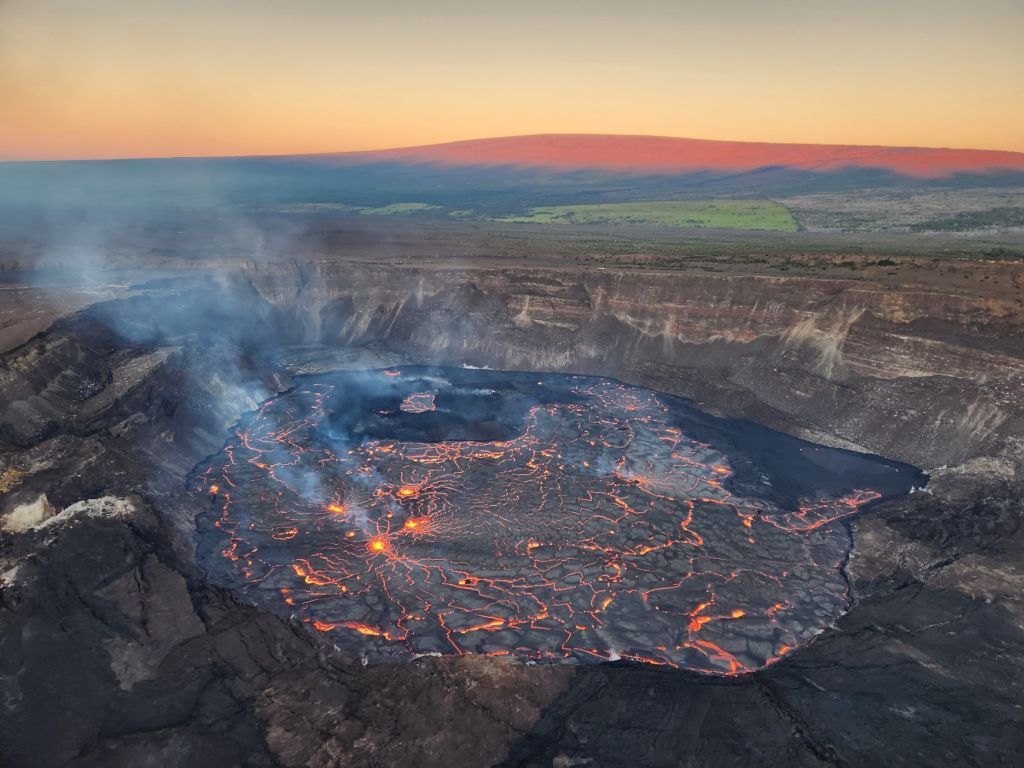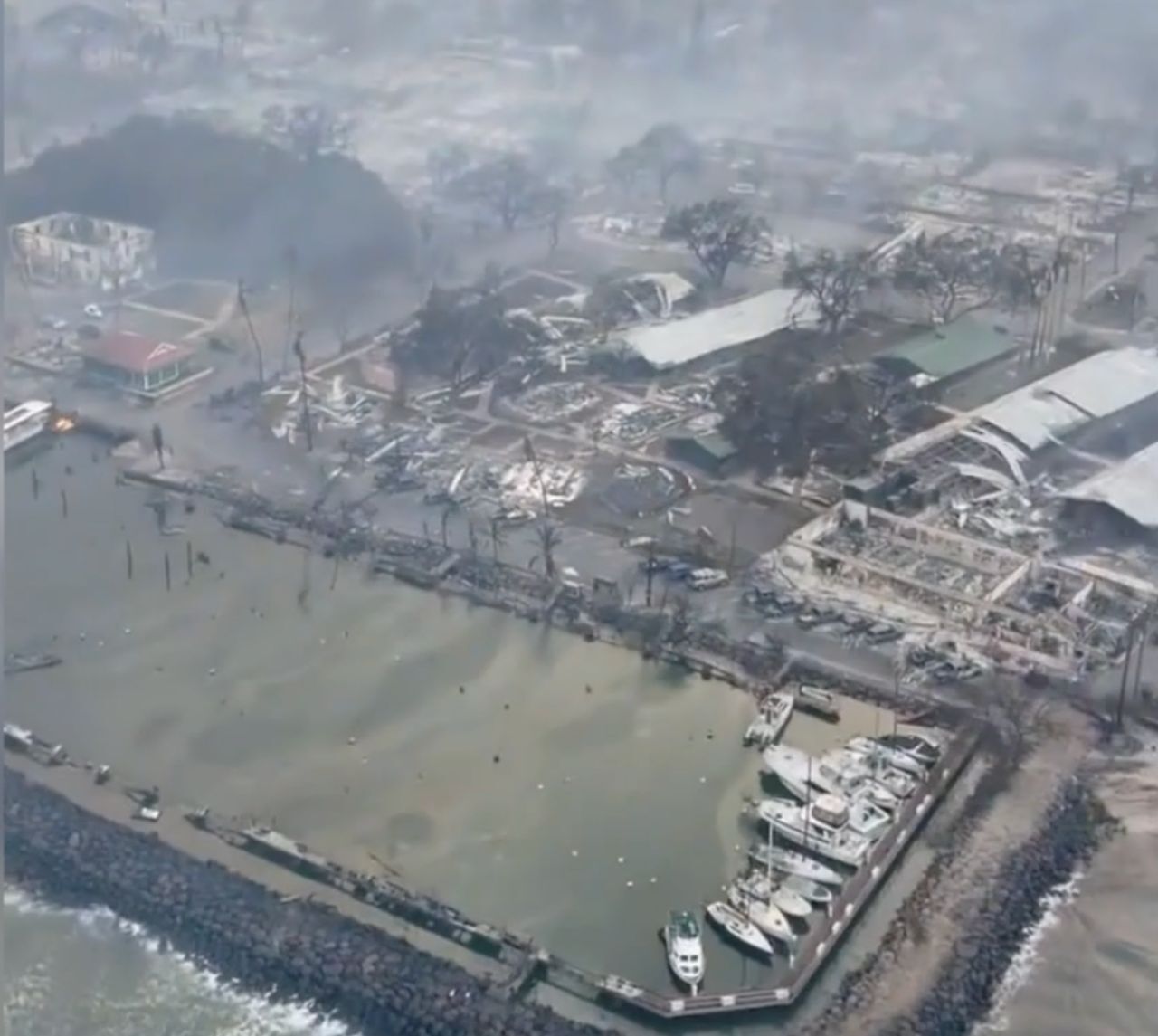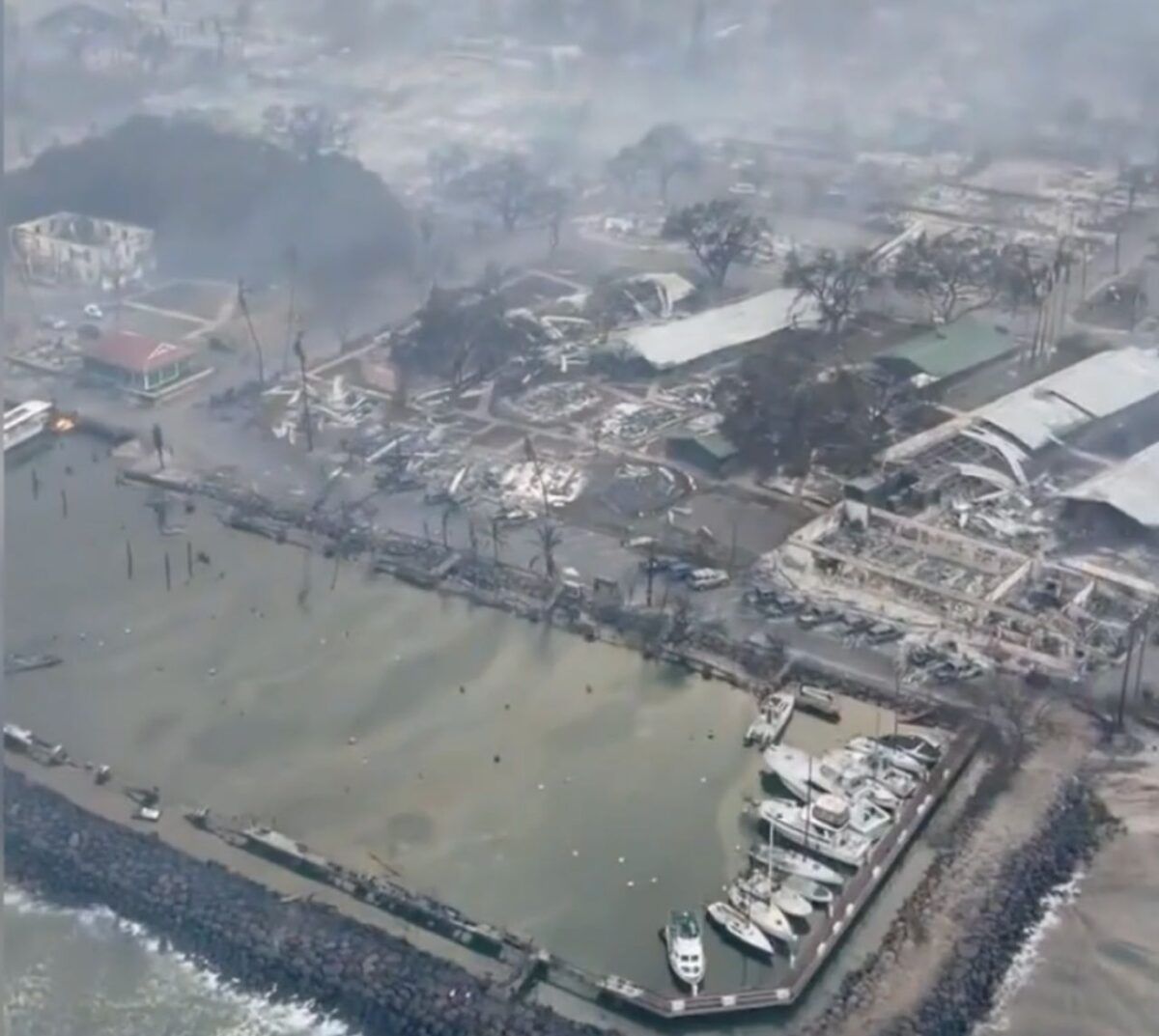One of the world’s most active volcanoes, Kilauea in Hawaii, has erupted again, according to the US Geological Survey (USGS).
The USGS Hawaiian Volcano Observatory, or HVO said, “Kīlauea volcano began erupting within Halema‘uma‘u crater at approximately 4:34 p.m. HST on January 5, 2023, following a couple of weeks of intermittently elevated summit earthquake activity and gradual inflationary summit ground tilt.”
As of 7:30 a.m. HST this morning, January 6, several very minor fountains remain active in the central-eastern portion of Halema‘uma‘u crater floor. The high initial effusion rates are declining rapidly as lava that was stored within the magma system over the past month erupts. The fountains decreased in vigor overnight and are consistently about 5 meters (16 feet) high this morning.
Lava flows have inundated much of the crater floor (which is nearly 300 acres or 120 hectares). The higher-elevation island that formed during the initial phase of the December 2020 eruption remains exposed, as well as a ring of older lava around the lava lake that was active prior to December 2022. This morning, the depth of new lava remains at about 10 meters (32 feet) at the base of Halema‘uma‘u crater.
The Hawaiian Volcano Observatory has set the volcano alert level at WATCH and aviation color code to ORANGE. There is currently no threat of significant volcanic ash emission into the atmosphere outside of the hazardous closed area within Hawai‘i Volcanoes National Park.
In late September, the Kilauea volcano erupted at its summit, spewing thick plumes and creating fire fountains up to 100 feet (about 30 meters) tall and flooding the Halemaʻumaʻu crater floor.
The volcano has erupted often since 1983.
Source: AA, USGS













